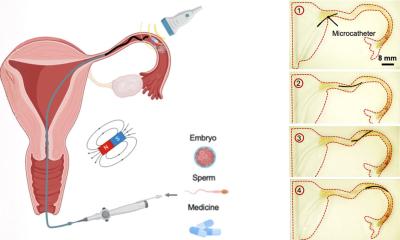Demographics
Is Europe dying?
More people in Europe are dying than are being born, according to a new report co-authored by a Texas A&M University demographer. In contrast, births exceed deaths, by significant margins, in Texas and elsewhere in the U.S., with few exceptions.

Texas A&M Professor of Sociology Dudley Poston, along with Professor Kenneth Johnson, University of New Hampshire, and Professor Layton Field, Mount St. Mary’s University, published their findings in Population and Development Review this month.
The researchers find that 17 European nations have more people dying in them than are being born (natural decrease), including three of Europe’s more populous nations: Russia, Germany and Italy. In contrast, in the U.S. and in the state of Texas, births exceed deaths by a substantial margin.
“In 2013 in Texas, for example, there were over 387,000 births compared to just over 179,000 deaths,” says Poston. “The only two states in the U.S. with more deaths than births are the coal mining state of West Virginia and the forest product state of Maine.”
The research focuses on the prevalence and dynamics of natural decrease in the counties and county-equivalents of Europe and the United States in the first decade of the 21st century (2000-2009).
Findings reveal that 58 percent of the 1,391 counties of Europe had more deaths than births compared to just 28 percent of the 3,141 counties of the U.S.
In Texas, just 24 percent of the state’s 254 counties had more deaths than births. And in Texas between 2010 and 2014, 27 percent of the 254 counties had more deaths than births.
The researchers find that in Europe, deaths exceeded births in most of the counties of Germany, Hungary, Croatia, Romania, Bulgaria and the Czech Republic, as well as in Sweden and the Baltic States. Further south, natural decrease is found occurring in the majority of the counties of Greece, Portugal and Italy.
Though natural decrease was common in much of Europe, findings show that’s far from universal. Natural increase (more births than deaths) is widespread in Ireland, Cyprus, Iceland, Lichtenstein and Luxembourg. Natural increase is also evident in broad regions of France, Belgium, the Netherlands, Switzerland, United Kingdom and Norway.
In the U.S., deaths exceed births most significantly in a north-sound band from the Dakotas through Nebraska, Kansas and Oklahoma, down to central Texas. Poston and his colleagues Johnson and Field note that this natural decrease can be attributed to the predominance of agriculture and youth adult outmigration. Also natural decrease is found in retirement destinations in Florida, Arizona and Texas due to a substantial inflow of older adults. Other states with higher death than birth rates include North Dakota, Montana, Maine and West Virginia; many other U.S. states have little, if any, natural decrease.
“Natural decrease is much more common in Europe than in the U.S because its population is older, fertility rates are lower and there are fewer women of child-bearing age,” Poston and his colleagues explain. “Natural decrease is a major policy concern because it drains the demographic resilience from a region diminishing its economic viability and competitiveness.”
The full study, “More Deaths than Births: Subnational Natural Decrease in Europe and the United States,” can be viewed online at http://onlinelibrary.wiley.com/doi/10.1111/j.1728-4457.2015.00089.x/full.
Source: Texas A&M University
14.01.2016





